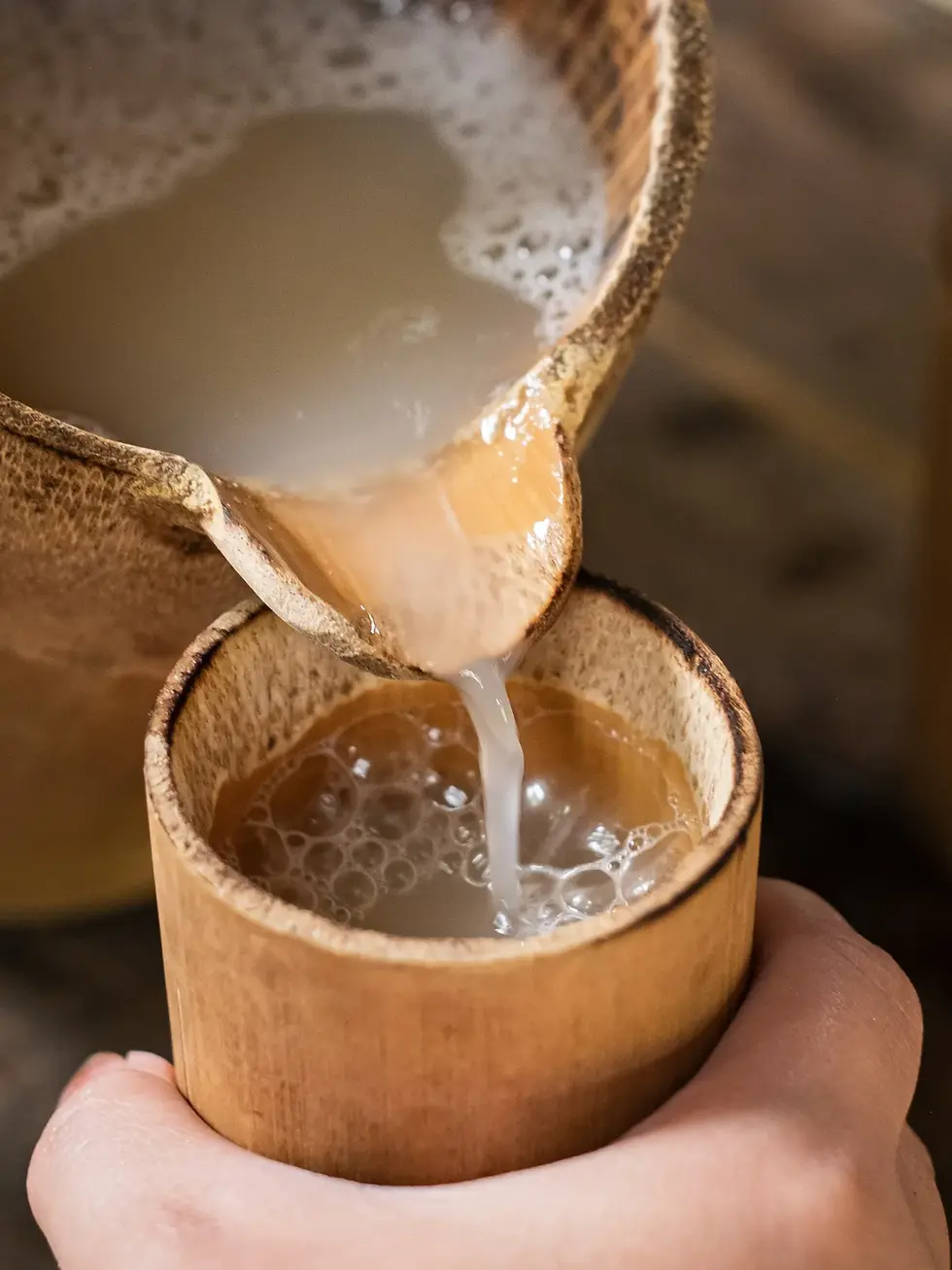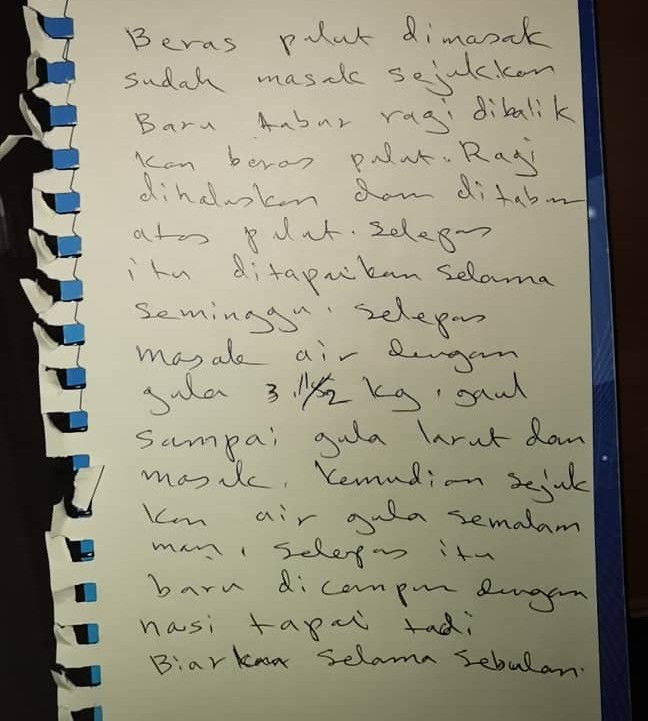Tuak: The Spirit of Borneo
- infothedoublestrai
- Mar 25
- 4 min read

Tuak, a traditional rice wine, holds a special place in the cultural tapestry of Malaysia, particularly among the indigenous communities of Sarawak and Sabah in East Malaysia on the island of Borneo. This spirit is not just a beverage; it symbolizes heritage, community, and the age-old customs of the local people. As the country continues to modernize, tuak remains a cherished link to the past, offering a glimpse into the rituals, celebrations, and daily life of the East Malaysian indigenous tribes.
Historical Background
The origins of tuak can be traced back centuries, deeply rooted in the agricultural practices of the indigenous peoples of Borneo. Rice, a staple crop in these communities, serves as the primary ingredient for tuak. Traditionally, tuak was brewed during significant events such as harvest festivals, weddings, and community gatherings, acting as a means to bring people together and foster social bonds. Different ethnic groups of Borneo, including the Iban, Bidayuh, and Kayan, have their unique variations of tuak, each with distinct flavors and preparation methods. The significance of tuak in these cultures goes beyond its intoxicating properties; it embodies the spirit of hospitality and is often offered to guests as a gesture of welcome.
Cultural Significance
Tuak plays an integral role in the social and cultural practices of indigenous East Malaysians. During festivals like Gawai Dayak, which celebrates the harvest season, tuak is consumed in abundance, signifying gratitude for the blessings of the earth. The spirit is often accompanied by traditional dances, music, and feasting, creating a vibrant atmosphere of celebration.
In addition to its role in festivities, tuak is a vital part of rituals and ceremonies. It is commonly used in rites of passage, including births, marriages, and funerals, symbolizing the cycle of life and the connection between the living and the spirit world. Offering tuak to ancestors is a way to honor them, seeking their blessings and guidance.
Tuak in Contemporary Malaysia
As Malaysia modernizes, tuak has encountered both challenges and opportunities. While urbanization and globalization have introduced new beverages and consumption patterns, tuak has maintained its relevance, particularly in rural areas. It remains a symbol of cultural identity and pride among indigenous communities in East Malaysia, fostering a sense of belonging and continuity.
In recent years, there has been a resurgence of interest in traditional crafts, including tuak brewing. Some young people are learning the art of making tuak, blending traditional techniques with innovative flavors and presentation. This revival not only preserves heritage but also introduces tuak to a broader audience, including tourists seeking authentic cultural experiences.
Tuak and Sustainability
The brewing of tuak also presents an opportunity to explore sustainable practices. Many indigenous communities are adopting eco-friendly methods in their agricultural practices, focusing on organic rice cultivation and minimizing environmental impact. By supporting local artisans and preserving traditional brewing techniques, consumers can contribute to sustainable development and the protection of indigenous cultures.
The Brewing Process
The brewing of tuak is both an art and a science, typically involving a few essential ingredients: rice, water, and a fermenting agent known as "ragi." The process begins with washing and soaking the rice, which is then steamed or boiled. After cooking, the rice is cooled and mixed with ragi, a natural yeast obtained from the bark of certain trees or from previous batches of tuak.
Once combined, the mixture is placed in a container, often made from bamboo or clay, and left to ferment for several days. The duration of fermentation can vary, impacting the alcohol content and flavor profile of the final product. After fermentation, tuak is strained to remove the solid residues, resulting in a clear, aromatic beverage with a slightly sweet and fruity taste.
How to prepare Tuak according to an original Sarawakian recipe:

Time needed:
5 weeks
Tools:
Large cooking pot
Plastic basin (16" or 18")
Medium sized jar / barrel
Ingredients:
16 cups of glutinous rice
10 packs of ragi (30 gram/pack)
3 kg sugar
20 liters water
Ragi, in the context of fermentation, refers to a fermentation starter made from dried and powdered molds, yeasts, or a combination of microorganisms. It is often used in traditional fermentation processes to break down starches in ingredients like rice, enabling the production of alcohol or enhancing flavor.
Ragi in this recipe is likely a commercially prepared or homemade starter culture. It is commonly used in Southeast Asian and South Asian countries for brewing traditional beverages like tuak (a rice wine) or other fermented products.
This should not be confused with finger millet, which is also called "ragi" in some parts of South Asia, especially in India.
Procedure:
Cook the rice
Wash the glutinous rice thoroughly.
Boil the rice in 2.8 liters of water until fully cooked.
Allow the cooked rice to cool completely.
Prepare for fermentation
Once cooled, transfer the rice into a plastic basin.
Sprinkle the ragi (fermentation starter) evenly over the rice.
Turn the rice over and repeat, ensuring all the rice is evenly coated with ragi.
Transfer the ragi-coated rice into a large jar or barrel with a lid.
Store the jar in a cool, dark place and let it ferment for 1 week.
Prepare the sugar water
After 1 week, prepare sugar water to add to the fermented rice.
Boil 3 kg of sugar with 20 liters of water until the sugar fully dissolves.
Let the sugar water cool completely, ideally overnight.
Combine and continue fermentation
Mix the cooled sugar water into the fermented rice.
Allow the mixture to ferment further in the jar or barrel for 1 month.
Bottle the Tuak
After 1 month of fermentation, transfer the tuak into bottles of your choice.
Shelf life:
Up to 3 months
In conclusion, Tuak is more than just a traditional rice wine—it is a symbol of culture, community, and celebration. From its deep-rooted history among indigenous communities to its evolving role in modern craft beverages, Tuak continues to be cherished for its unique flavors and social significance. Whether enjoyed in traditional ceremonies or contemporary gatherings, this versatile drink remains a testament to the rich heritage and craftsmanship of those who produce it.
For more articles about homemade ingredients click HERE
and stay up to date subscribing to our newsletter HERE







Comments